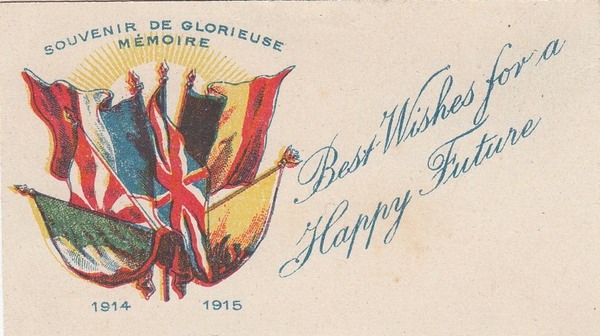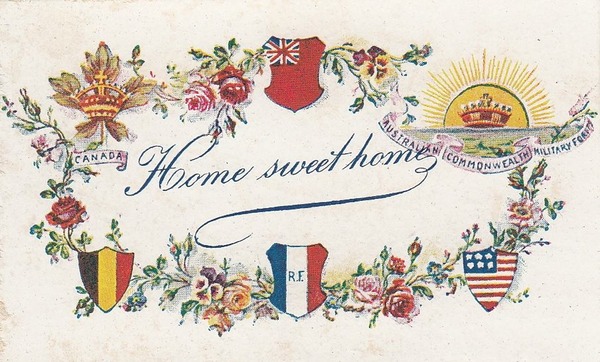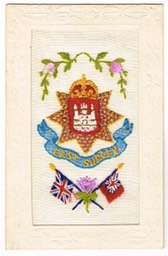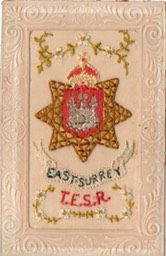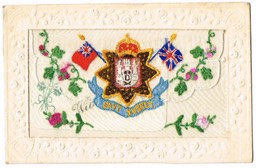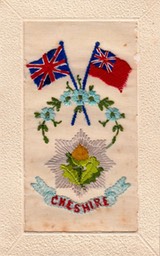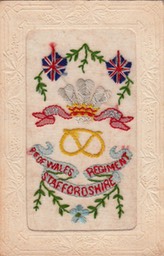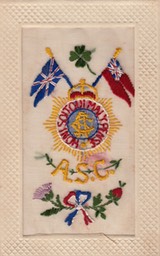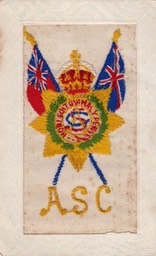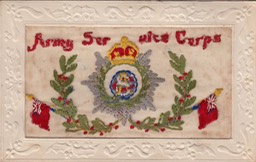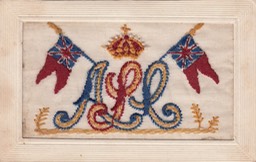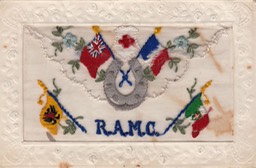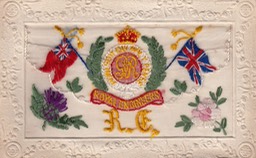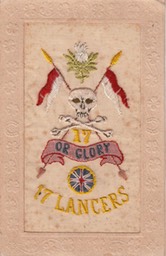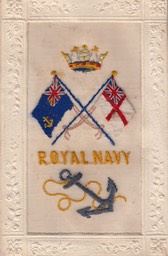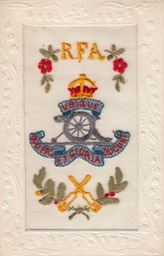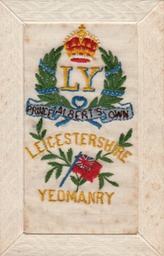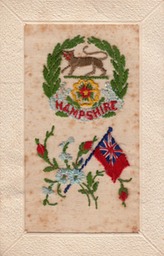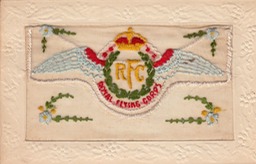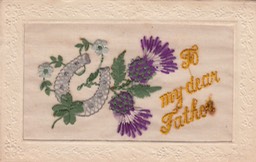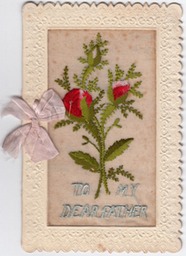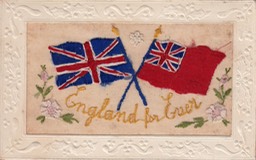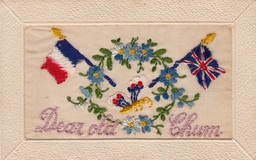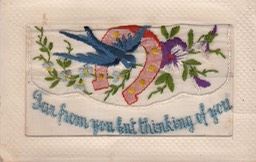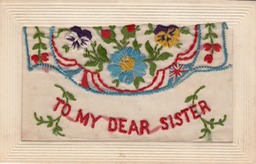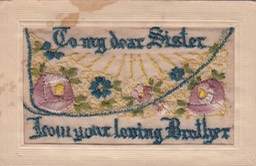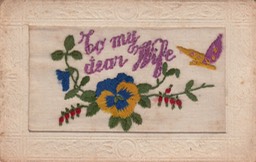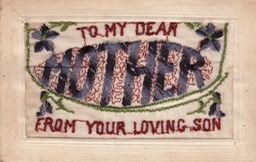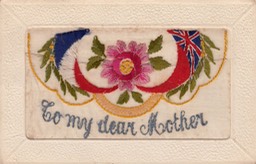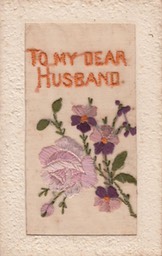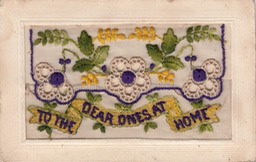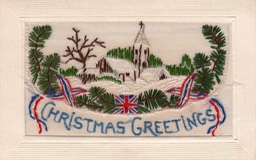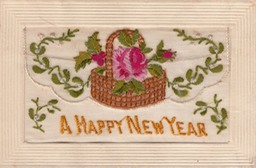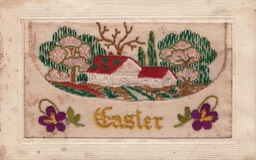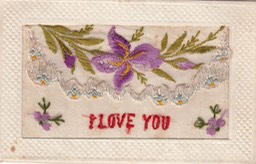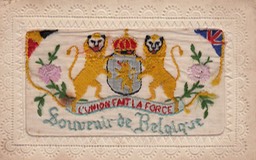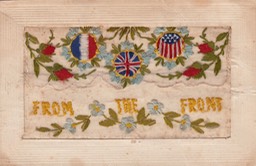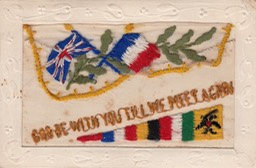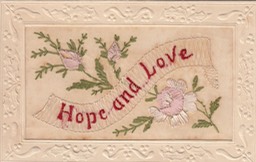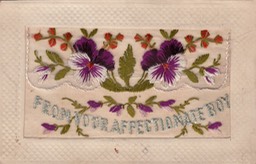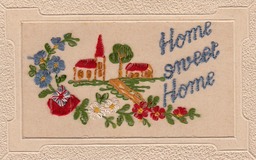Insert card tucked inside the flap of an envelope-style silk postcard. Printed with the flags of the Allies (left to right: France, Britain, Belgium, Japan, Italy, Russia), and an optimistic greeting for a “Happy Future”. Commemorates the first year of the war, as a “Souvenir to the Glorious Memory of 1914–1915”. Actual size: 80mm x 45mm.
Silk embroidered postcards (135mm x 90mm) were popular amongst British troops during the First World War. They were crafted by French and Belgian textile workers and sold as souvenirs to soldiers on the Western Front.
Designs were machine-embroidered in factories onto large sheets of mesh, using many colours of silk yarn. A single design was repeated many times across the sheet to fill the fabric (surviving sheets contain several hundred repeat designs).
The finished designs were cut from the sheets, mounted onto card, and edged with an embossed card frame.
There were two main formats:
- panel style with a rectangle of embroidered mesh fixed to the card;
- envelope style in which two pieces of embroidered mesh were sewn and mounted to form a pocket or flap which opened to reveal a small printed card or silk handkerchief tucked inside.
Designs found on the cards include:
- flowers, especially forget-me-nots, pansies and “lucky heather";
- patriotic messages;
- sentimental messages;
- seasonal greetings for Christmas and Easter;
- embroidered or photographic portraits of military and political leaders;
- symbols such as the flags of the Allies;
- regimental crests and badges.
These colourful greetings cards gave no indication of what the sender was experiencing on the Western Front, sparing families at home from the true horrors of the war.
A selection of silk postcards issued during the First World War.
Click an image to enlarge and view as a slideshow.
The silk post cards pictured are from a private collection, kindly made available to brothersatwar.co.uk.
